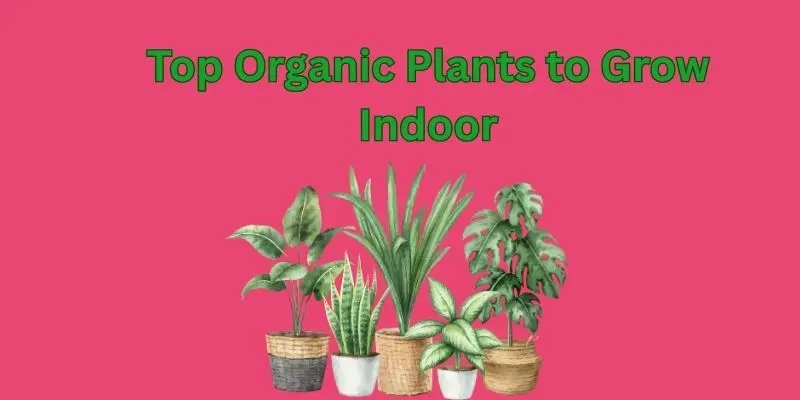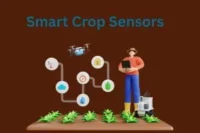Indoor Organic Garden. Grow a Healthier, Happier Life at Home
Published: 11 Jun 2025
I’ve heard people talk about indoor organic gardens like they’re some kind of magic—fresh food, cleaner air, better mood. It sounds amazing, but honestly, I’m not sure I get it. How can you grow real vegetables or herbs inside your house? Doesn’t gardening need space, sunlight, and, well… a garden? I don’t even know where to start. Do I need special soil? Can plants even survive in my small apartment? The whole thing sounds complicated and maybe a bit unrealistic. Still, I can’t help but wonder—what if it’s actually possible? What if growing something green right inside my home could change more than just what’s on my plate?
So, guys, without wasting time, let’s jump into the article to learn “Indoor Organic Garden: Grow a Healthier, Happier Life at Home
Why Indoor Gardening Changes Lives
- Explain the deeper emotional and lifestyle benefits:
- Restores mental peace and daily mindfulness
- Provides fresh, chemical-free food
- Builds a stronger connection with nature
- Offers a rewarding escape from screens and routine
- Highlight how it supports a healthy, eco-conscious lifestyle
Tools You Need to Grow Indoors
- Detailed list of beginner-friendly materials:
- Organic potting soil and compost
- Planters or containers with good drainage
- Grow lights for low-light areas
- Watering cans or spray bottles
- Encourage eco-friendly choices and reuse of household items
Top Organic Plants to Grow Indoor
- Categorize easy and rewarding plants:
- Culinary herbs: Basil, Mint, Parsley
- Leafy greens: Spinach, Lettuce, Kale
- Small fruits and veggies: Tomatoes, Peppers, Radishes
- Mention factors like sunlight, space, and maintenance needs

Daily Care for You and Your Garden
- Suggest simple daily habits:
- Morning light check
- Checking soil moisture
- Pruning or touching leaves for care and bonding
- Weekly tasks like feeding with compost tea or organic fertilizer
- Emphasize how this rhythm improves your mood and focus
Emotional Benefits of Nurturing an Indoor Garden
- Reduce stress, anxiety, and screen-time fatigue
- Gain a sense of purpose and progress
- Enjoy healthier, more vibrant meals with homegrown produce
- Share quotes or short personal anecdotes/testimonials
Overcoming Common Indoor Gardening Challenges
- Address beginner fears with solutions:
- Poor light → use grow lights
- Overwatering → test soil and improve drainage
- Pests → natural repellents like neem oil or cinnamon
- Reassure readers that mistakes are part of learning
Tips to Maximize Small Spaces for Your Garden
- Use vertical space with shelves and hanging planters
- Try hydroponic or window gardens
- Combine decoration with functionality
Build a Lifestyle Around Your Indoor Garden
- Journal your garden’s growth to build connection
- Involve your kids or family in planting and harvesting
- Join local or online gardening communities
- Share your garden on social media to inspire others
FAQs about Indoor Organic Garden
Here are some of the most frequently asked questions about Indoor Organic Garden: Grow a Healthier, Happier Life at Home
Yes, most plants need light to grow—even indoors. If you don’t have enough natural sunlight, you can use LED grow lights that work just as well.
Absolutely! You don’t need a big space. Many vegetables like spinach, lettuce, and cherry tomatoes grow well in small containers on a windowsill or shelf.
An indoor garden is organic when you avoid using synthetic chemicals and use natural soil, compost, and organic seeds instead. It’s all about keeping your plants and your food chemical-free.
It doesn’t have to be. With the right containers and setup, indoor gardening is clean, simple, and easy to maintain—even for beginners.
Stick your finger into the soil about an inch deep—if it feels dry, it’s time to water. Most indoor plants don’t like too much water, so it’s better to water less than more.
Final Thought
The content outlines the emotional and practical benefits of starting an indoor organic garden, including improved mental health, access to fresh organic produce, and a more sustainable lifestyle. It covers the basics—like tools, ideal plants, daily care routines, and space-saving tips—making it beginner-friendly. It also addresses common challenges such as limited light and pests, offering simple solutions. Knowing these types of indoor gardens is essential for anyone seeking to improve their well-being, reduce environmental impact, and create a peaceful, purposeful home environment.

- Be Respectful
- Stay Relevant
- Stay Positive
- True Feedback
- Encourage Discussion
- Avoid Spamming
- No Fake News
- Don't Copy-Paste
- No Personal Attacks

- Be Respectful
- Stay Relevant
- Stay Positive
- True Feedback
- Encourage Discussion
- Avoid Spamming
- No Fake News
- Don't Copy-Paste
- No Personal Attacks





